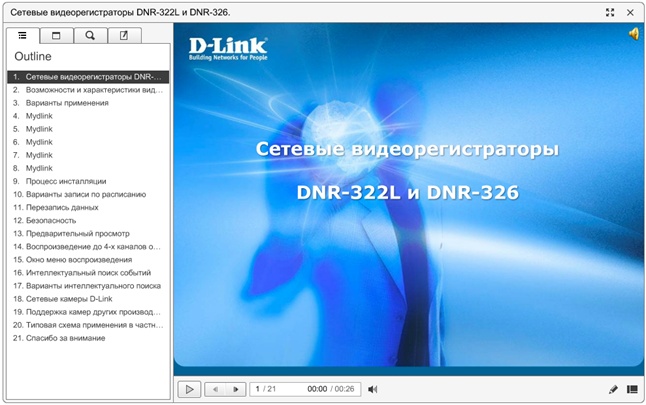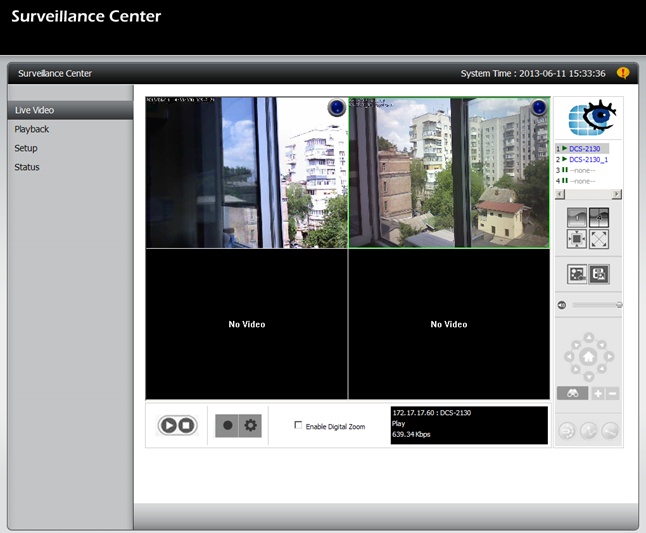And again about video surveillance

I will not say a lot of loud, clever phrases, singing the need for a video surveillance system for everyone. Everyone for himself will make a conclusion about the necessity and expediency of using such systems in an apartment, house, office.
I just want to talk about the systems that I have to deal with at work, about their pros and cons.
The heart of any surveillance system is the DVR. He collects video from cameras, displays a summary image on a display device (TV or monitor), as well as records and works with the video archive. The main types of video recorders are DVR (Digital Video Recorder), NVR (Network Video Recorder) and HDVR (Hybrid Digital Video Recorder). There are specialized stand-alone devices, as they say "all in one", there are software systems for PC. I practically did not work with HDVR, so I can’t tell a lot about them. DVR is, in my opinion, outdated system, which is rapidly being replaced by more modern HDVR and NVR. Therefore, it makes no sense to talk about it at all.

')
And so NVR, what is it. The word “network” means that the DVR receives an image over the network from IP cameras or another NVR, and not by coax from analog cameras. The main disadvantage is that there is no direct connection of analog mini / micro cameras. But this is solved with the help of video servers, for example D-Link DVS-310-1 . It provides reception of image and sound from analog devices, converts audio and video to an IP video stream, and transmits over the network to the NVR. I will not talk about the advantage of IP cameras over analog ones, and so much has been written about it.
What to use as a DVR? Well, probably the most versatile solution - the usual PC with a software video surveillance system. But free systems have very big limitations in functionality, and paid ones ... look at how much they cost and many will immediately want to have such a video surveillance system ;-)
The specialized NVRs I worked with are D-Link DNR-322L and DNR-326 .
There is a video presentation "Network Video Recorders DNR-322L and DNR-326" . I recommend to get acquainted.

A cheaper option is the D-Link DNS-325 and DNS-345 network drives with the addition (Add-On) of Surveillance Station . Using the built-in DLNA server or installing Mediatomb or Twonky Add-Ons, you can watch LiveVideo or the video archive on SmartTV. Instructions for installing and configuring "Surveillance Station" .

Their main limitation with respect to D-Link D-ViewCam software and NVR NVR series is to work with only 4 IP cameras, as well as a list of supported IP cameras.

Those who are familiar with such systems will say, “And how is this better than QNAP and Synology have?”. Well, of course, the main difference is the price - D-Link is one and a half times cheaper than its competitors "classmates", while not inferior to them by any criteria.
The cost of such a system will allow many to purchase such a network drive “for home, for family”. Moreover, except for video surveillance, it remains a full-featured network drive - 2 or 4 drives (JBOD, RAID0, RAID1, RAID5), Samba server (Windows Share), FTP server, NFS server, WebDAV, Torrent client, DLNA server and much more.
Well, the most interesting thing I left lastly is the Add-On Surveillance Station for the D-Link DNS-320 NAS .
Initially, this model does not have Add-Ons installation function. But I made a package, which is not complicated manipulations, allows you to run "Surveillance Station" on this device. And what is it interesting? Well, for example, the price of QNAP TS-212 is around $ 230, and the price is in fact its classmate D-Link DNS-320 around $ 80. I think for many it will be a serious argument.
Source: https://habr.com/ru/post/182996/
All Articles